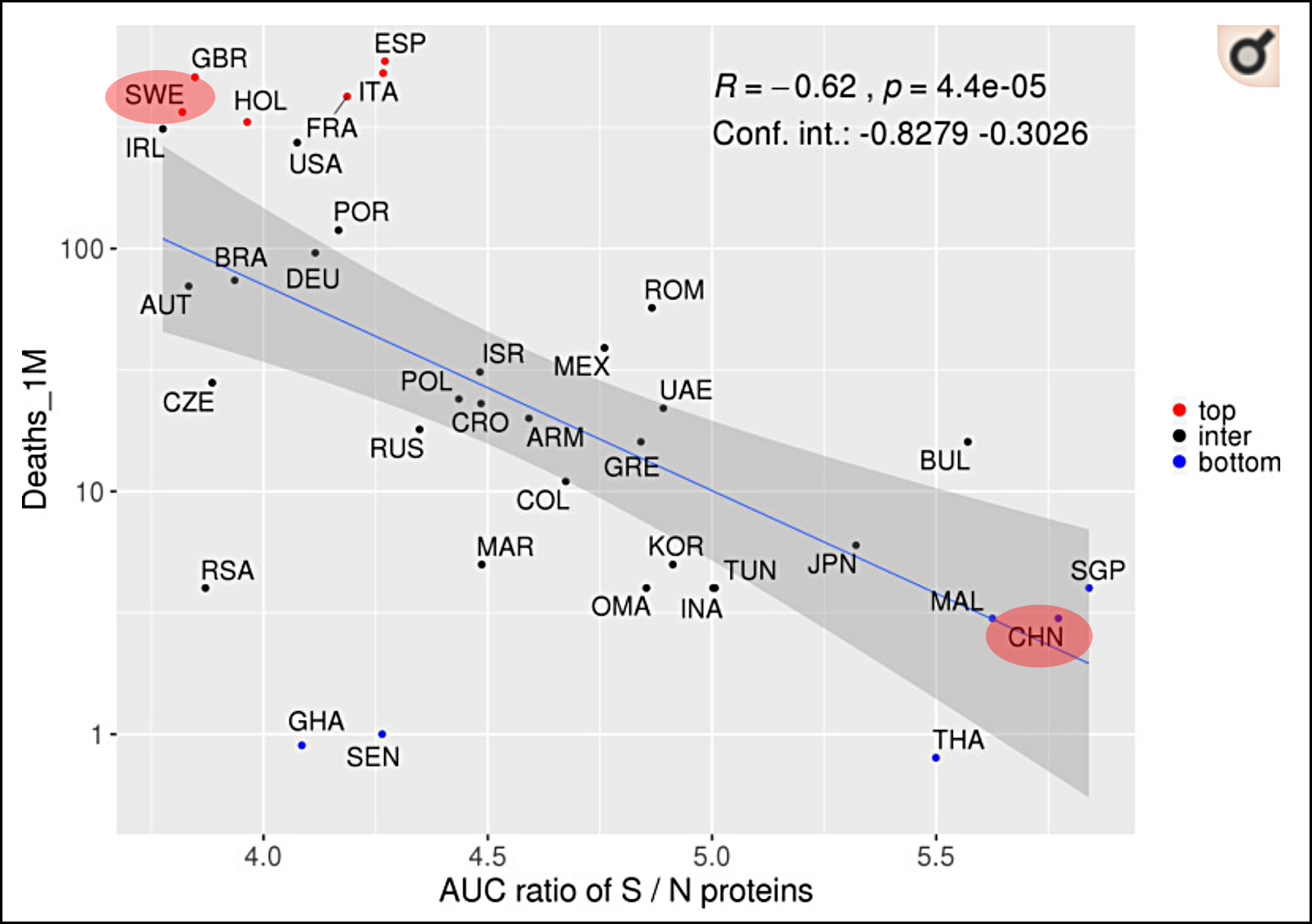Here is something tentative but genuinely fascinating. I promise the payoff is worth it, but first it’s going to require a little bit of background about how the immune system works.
Human cells all contain proteins called human leukocyte antigens, or HLAs, which swim around and periodically latch on to invading viruses, which they bring to the surface of the cell. White blood cells, patrolling outside the cells, are always looking for stuff that doesn’t belong, and if an HLA presents an invader to the surface of the cell white blood cells immediately attack and destroy the entire cell. Conversely, if no HLA brings a virus to the surface, then its existence goes undetected and the immune system can’t attack it.
Now here’s the interesting part: there are dozens of different kinds of HLAs, and everybody has a different HLA profile. That’s one reason that if you and I both get sneezed on by someone with a cold, one of us might get sick while the other doesn’t. It means that one of us happened to have the right HLA to latch onto the virus while the other one didn’t.
And here’s the even more interesting part: different human populations have different average HLA profiles. This means that some populations are more resistant to certain diseases than others. For example, COVID-19.
In a recent paper, a team of researchers looked at 140 different HLAs, and in particular discovered that COVID-19 seemed to be sensitive to the ratio of the S and N types. Here’s the chart:

One of the great mysteries of COVID-19 is why China has been relatively unscathed. Aside from the initial outbreak in Wuhan, there have been hardly any cases in the entire country. But how can that be? Even with strong quarantine procedures, it’s simply not plausible that a fairly transmissible virus like COVID-19 could fail to spread widely in a country of over a billion people.
HLAs might be the answer. As you can see in the chart, the authors estimate that the S/N ratio for China is about 5.7, one of the highest in the world. That would suggest high resistance to the COVID-19 virus. At the other end, Sweden has an S/N ratio of 3.8, one of the lowest in the world. It’s possible that the “Swedish experiment” was never an experiment at all. They might have been doomed to a high COVID-19 infection rate no matter what they had done.
This is very preliminary research, and HLA profiles are certainly not the entire story. That said, if this is confirmed—or if other HLA profiles are identified that are associated with COVID-19—it might change our understanding of why infection rates are very different in different parts of the world.


















